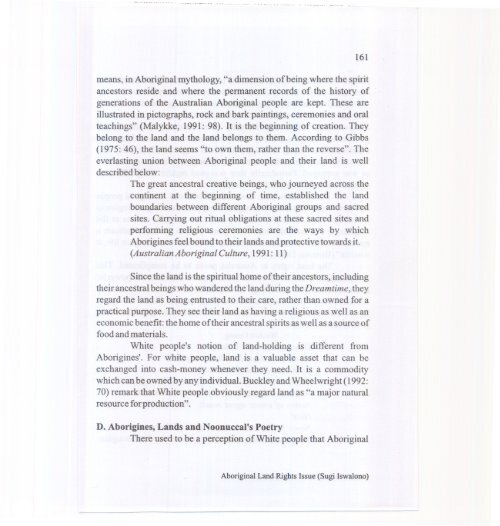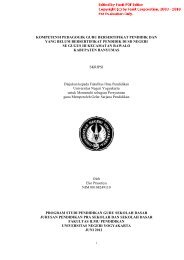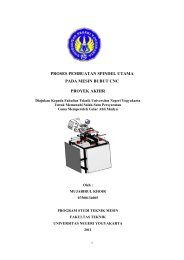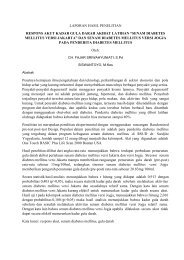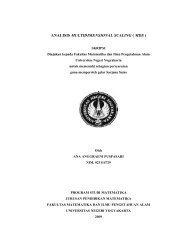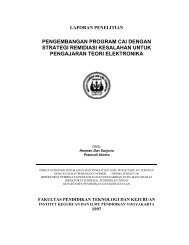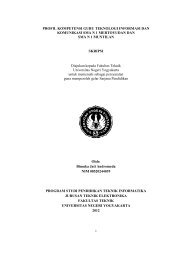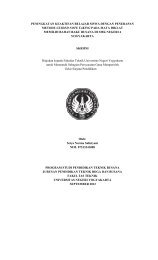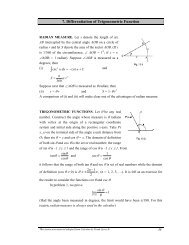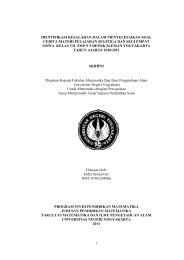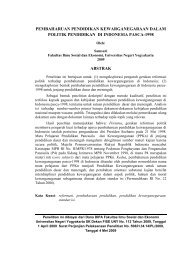aboriginal land rights issueas recorded in oodgeroo noonuccal's ...
aboriginal land rights issueas recorded in oodgeroo noonuccal's ...
aboriginal land rights issueas recorded in oodgeroo noonuccal's ...
You also want an ePaper? Increase the reach of your titles
YUMPU automatically turns print PDFs into web optimized ePapers that Google loves.
161means, <strong>in</strong> Aborig<strong>in</strong>al mythology, "a dimension of be<strong>in</strong>g where the spiritancestors reside and where the permanent records of the history ofgenerations of the Australian Aborig<strong>in</strong>al people are kept. These areillustrated <strong>in</strong> pictographs, rock and bark pa<strong>in</strong>t<strong>in</strong>gs, ceremonies and oralteach<strong>in</strong>gs" (Malykke, 1991: 98). It is the beg<strong>in</strong>n<strong>in</strong>g of creation. Theybelong to the <strong>land</strong> and the <strong>land</strong> belongs to them. Accord<strong>in</strong>g to Gibbs(1975: 46), the <strong>land</strong> seems "to own them, rather than the reverse". Theeverlast<strong>in</strong>g union between Aborig<strong>in</strong>al people and their <strong>land</strong> is welldescribed below:The great ancestral creative be<strong>in</strong>gs, who journeyed across thecont<strong>in</strong>ent at the beg<strong>in</strong>n<strong>in</strong>g of time, established the <strong>land</strong>boundaries between different Aborig<strong>in</strong>al groups and sacredsites. Carry<strong>in</strong>g out ritual obligations at these sacred sites andperform<strong>in</strong>g religious ceremonies are the ways by whichAborig<strong>in</strong>es feelbound to their <strong>land</strong>s andprotective towards it.(AustralianAborig<strong>in</strong>al Culture, 1991:II)S<strong>in</strong>ce the <strong>land</strong> is the spiritual home of their ancestors, <strong>in</strong>clud<strong>in</strong>gtheir ancestralbe<strong>in</strong>gs who wandered the <strong>land</strong>dur<strong>in</strong>gthe Dreamtime, theyregard the <strong>land</strong> as be<strong>in</strong>g entrusted to their care, rather than owned for apractical purpose. They see their <strong>land</strong> as hav<strong>in</strong>g a religious as well as aneconomicbenefit: the home of their ancestral spirits as well as a source offood and materials.White people's notion of <strong>land</strong>-hold<strong>in</strong>g is different fromAborig<strong>in</strong>es'. For white people, <strong>land</strong> is a valuable asset that can beexchanged <strong>in</strong>to cash-money whenever they need. It is a commoditywhich can be owned by any <strong>in</strong>dividual. Buckley andWheelwright (1992:70) remark that White people obviously regard <strong>land</strong> as "a major naturalresource forproduction".D. Aborig<strong>in</strong>es,Lands and Noonuccal'sPoetryThereusedto be a perceptionof WhitepeoplethatAborig<strong>in</strong>alAborig<strong>in</strong>al Land Rights Issue (Sugi Iswalono)


